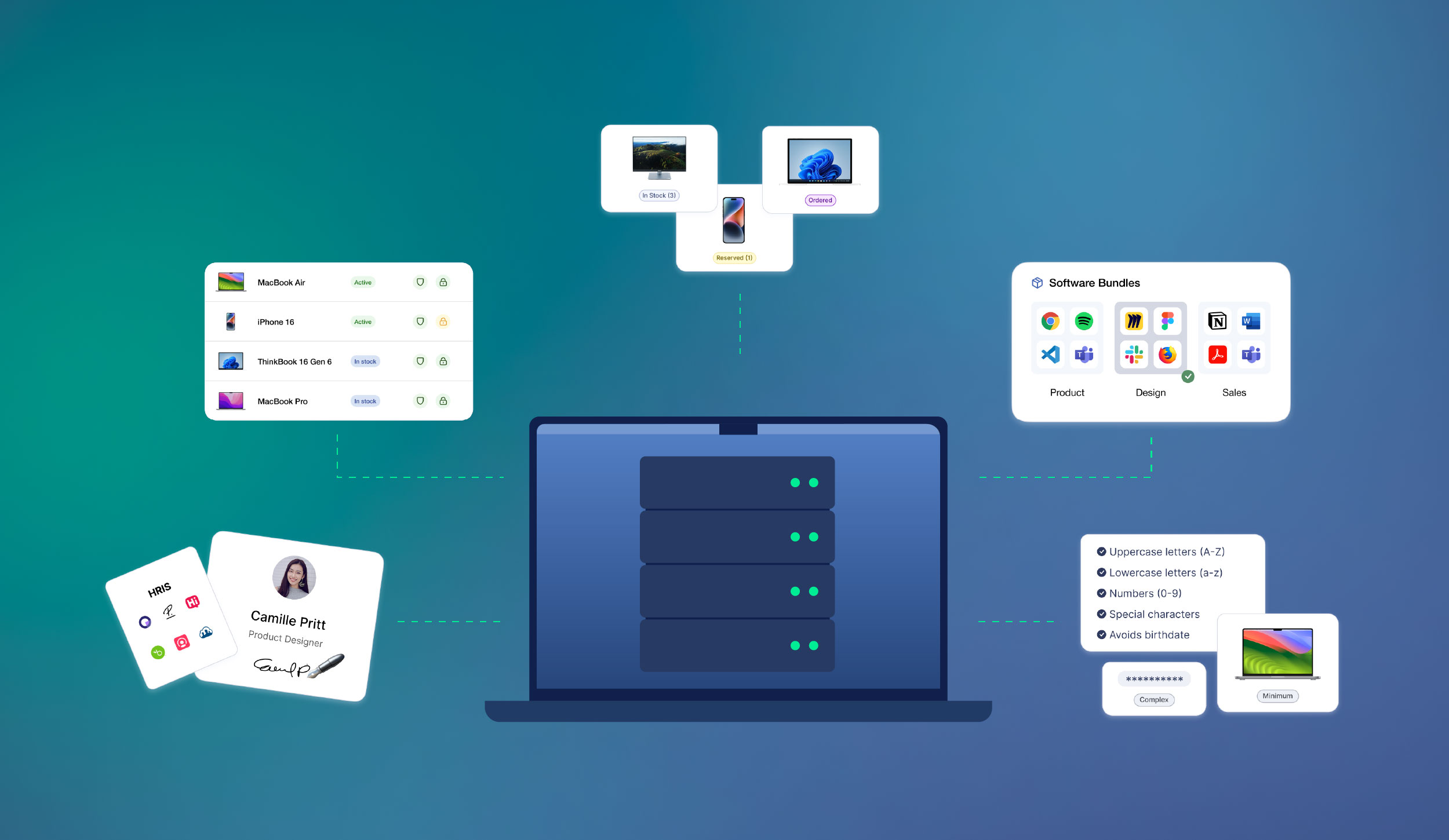Key Takeaways
Netzwerksicherheit umfasst alle Maßnahmen und Praktiken, die den Datenfluss zwischen Geräten, Systemen und Nutzern innerhalb Ihres Netzwerks schützen.
Ob Datensicherheit, reibungsloser Betrieb oder geschützte Zusammenarbeit – die effektive Umsetzung dieser fünf Empfehlungen ist entscheidend:
#1 Netzwerk mit einer Firewall absichern
Eine Firewall fungiert als digitaler Türsteher und blockiert unbefugte Zugriffe sowie schädliche Aktivitäten. Als Barriere zwischen internem Netzwerk und externen Bedrohungen kontrolliert sie ein- und ausgehenden Datenverkehr. So hält sie unbefugte Nutzer und potenziell gefährliche Daten fern.
#2 Datenschutz durch ein VPN gewährleisten
Durch Remote-Arbeit greifen Mitarbeitende oft von verschiedenen Standorten auf Unternehmensressourcen zu. Virtual Private Networks (VPNs) verschlüsseln Verbindungen und sichern Datenübertragungen – selbst in öffentlichen Netzwerken. Sie erstellen geschützte „Tunnel“ zwischen entfernten Geräten und Firmennetzwerken, was Datenabfangung praktisch unmöglich macht.
#3 Kontrolle durch zentralisiertes Netzwerk-Monitoring
Echtzeit-Monitoring ist unverzichtbar, um Bedrohungen und Schwachstellen schnell zu erkennen. Mit zentraler Verwaltung erhalten IT-Administratoren Echtzeit-Einblicke in den Datenverkehr, identifizieren Anomalien und reagieren umgehend auf Vorfälle. Diese proaktive Strategie beugt Sicherheitsverletzungen vor.
#4 Effektive Netzwerksegmentierung umsetzen
Durch Aufteilung des Netzwerks in isolierte Segmente schützen Sie sensible Daten vor unbefugtem Zugriff. Beispiel: Ein Gast-WLAN mit eingeschränktem Zugriff verhindert, dass das gesamte Netzwerk angreifbar wird – nur ein Teilbereich bleibt erreichbar.
#5 Zugriffsverwaltung mit zentraler Authentifizierung optimieren
Zentrale Authentifizierung vereinfacht die Zugriffskontrolle, indem Cloud-Netzwerke oder VPNs mit einem Identity-Provider wie Microsoft 365 verknüpft werden. Nur autorisierte Nutzer erhalten Zutritt, und die Konfiguration wird effizienter. Mitarbeitende loggen sich einfach mit ihren M365-Konten ein.
.png)
Fazit
In einer Welt, in der Daten ständig zwischen Geräten, Systemen und Nutzern fließen, ist maximale Netzwerksicherheit unverzichtbar. Mit diesen fünf Maßnahmen – Firewall, VPN, Echtzeit-Monitoring, Netzwerksegmentierung und zentraler Authentifizierung – schützen Sie Ihr Unternehmen vor wachsenden Cyber-Risiken.
Brauchen Sie Hilfe bei der Umsetzung? Die IT-Experten von deeploi unterstützen Sie gerne.

IT 101 mit Philipp – IT-Wissen für Nicht-Techniker
In dieser Serie erklärt unser Mitgründer Philipp technische Basics verständlich und praxisnah. In den letzten zehn Jahren baute er erfolgreich zwei IT-Unternehmen auf, bevor er 2023 deeploi mitgründete. Mit diesem fundierten Know-how macht er IT für Sie zugänglich.


.jpg)

